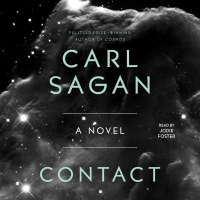Album perfectly interprets ‘songs’ of Blake
 Apart from the fact that this is a remarkable recording, in terms of Martha Redbone’s liquid vocals and the harmonious blend of John McEuen’s instruments (banjo, guitar, dubro, fiddle, mandolin, autoharp and dulcimer), the combining of music with William Blake’s “songs” is an amazing achievement.
Apart from the fact that this is a remarkable recording, in terms of Martha Redbone’s liquid vocals and the harmonious blend of John McEuen’s instruments (banjo, guitar, dubro, fiddle, mandolin, autoharp and dulcimer), the combining of music with William Blake’s “songs” is an amazing achievement.
MacDonald may be innocent after all
 I always thought he was guilty. Any doubts that I might have felt vanished after I read Joe McGinniss’ Fatal Vision. Jeffery MacDonald had murdered his wife and two daughters, stabbing and bludgeoning them to death in their apartment at Fort Bragg. I did not believe his story about the “hippies” who broke into his house at 3:30 in the morning chanting “Acid is groovy” and “Death to the Pigs.” In essence, I guess I agreed with the military police, the FBI and the Fayetteville Police Department that it sounded like an unconvincing, “copycat” version of the Manson murders some six months before (the word “Pig” written in blood was also at the murder scene).
I always thought he was guilty. Any doubts that I might have felt vanished after I read Joe McGinniss’ Fatal Vision. Jeffery MacDonald had murdered his wife and two daughters, stabbing and bludgeoning them to death in their apartment at Fort Bragg. I did not believe his story about the “hippies” who broke into his house at 3:30 in the morning chanting “Acid is groovy” and “Death to the Pigs.” In essence, I guess I agreed with the military police, the FBI and the Fayetteville Police Department that it sounded like an unconvincing, “copycat” version of the Manson murders some six months before (the word “Pig” written in blood was also at the murder scene).
Winter has come and Martin turns up the heat
 Kind hearts, winter has come. That dire prediction that began over 4,000 pages ago with A Game of Thrones has been fulfilled. In this, the final (?) book in the Songs of Ice and Fire series, all of the bleak predictions that began with “Winter is coming,” are gradually come to pass. However, that does not mean that we will finally see justice done. Unlike the marvelous world of Tolkien’s Lord of the Rings, where the good king finally comes home and the world becomes orderly and rational once more, the final chapters of A Dance With Dragons finds Westros and the Seven Kingdoms racked by war and famine. The majority of Martin’s characters appear to be lost, trapped or missing in action.
Kind hearts, winter has come. That dire prediction that began over 4,000 pages ago with A Game of Thrones has been fulfilled. In this, the final (?) book in the Songs of Ice and Fire series, all of the bleak predictions that began with “Winter is coming,” are gradually come to pass. However, that does not mean that we will finally see justice done. Unlike the marvelous world of Tolkien’s Lord of the Rings, where the good king finally comes home and the world becomes orderly and rational once more, the final chapters of A Dance With Dragons finds Westros and the Seven Kingdoms racked by war and famine. The majority of Martin’s characters appear to be lost, trapped or missing in action.
Real stories and lessons on how to tell them
 Here is a book about storytelling that strikes a responsive chord in my own heart. Not only is Mary Hamilton a gifted storyteller who is in demand throughout Appalachia (and beyond); she has built a career based on identifying and preserving the folklore of our region. She is not content to merely tell the stories — she wants you to know where the tales originated and why they are significant. In addition, she often gives you a half dozen variations of a tale and makes specific recommendations to storytellers (parents, teachers and librarians) about the subtle factors that make an audience (or a child) responsive.
Here is a book about storytelling that strikes a responsive chord in my own heart. Not only is Mary Hamilton a gifted storyteller who is in demand throughout Appalachia (and beyond); she has built a career based on identifying and preserving the folklore of our region. She is not content to merely tell the stories — she wants you to know where the tales originated and why they are significant. In addition, she often gives you a half dozen variations of a tale and makes specific recommendations to storytellers (parents, teachers and librarians) about the subtle factors that make an audience (or a child) responsive.
No shortage of critics as Kephart play comes home
 For a man who has just won the North Carolina Literature Award, writer Gary Carden is quite somber.
For a man who has just won the North Carolina Literature Award, writer Gary Carden is quite somber.
At his home in Sylva last week, he rocked in a chair on the front porch, his trusty dog Jack lying nearby. He was recently informed of the award, but it seems bittersweet. His latest creation — and a catalyst for the achievement — is the play “Outlander,” a historical drama about famed writer Horace Kephart who chronicled the lives of hardscrabble Appalachian settlers in the early 1900s.
Finding kindred souls in the Wyoming backcountry
 Let me begin by telling you that the book title above is misleading. Gerry Spence has more then a dozen published works, but I thought that his most provocative title might get your attention. Certainly, this review will talk about BB&PPOP, but I would prefer to talk about all of this man’s remarkable books. In addition, bear with me while I tell you how I came to visit Gerry Spence’s Lawyer’s College in Debois, Wyo., last week.
Let me begin by telling you that the book title above is misleading. Gerry Spence has more then a dozen published works, but I thought that his most provocative title might get your attention. Certainly, this review will talk about BB&PPOP, but I would prefer to talk about all of this man’s remarkable books. In addition, bear with me while I tell you how I came to visit Gerry Spence’s Lawyer’s College in Debois, Wyo., last week.
Rare book harkens back to a different time
 Ramblin’ in Rabun is a reprint of a delightful book that was written down in Clayton, Ga., some 40 years ago. I have always been a fan of books that were compiled by some imaginative journalist who became profoundly interested in the region where he lived and decided to develop a column composed of anecdotes, jokes and vanquished history. L.P. Cross started “Ramblin’ in Rabun” back in 1937 and it continued until 1953. During that time, Cross spent his weekends prowling through Rabun County, collecting odd bits of folklore, oral history and “folksy wisdom.” The column was extremely popular, and in time people sought Cross out to share some special bit of information, such as folk remedies, ancient murders and gossip.
Ramblin’ in Rabun is a reprint of a delightful book that was written down in Clayton, Ga., some 40 years ago. I have always been a fan of books that were compiled by some imaginative journalist who became profoundly interested in the region where he lived and decided to develop a column composed of anecdotes, jokes and vanquished history. L.P. Cross started “Ramblin’ in Rabun” back in 1937 and it continued until 1953. During that time, Cross spent his weekends prowling through Rabun County, collecting odd bits of folklore, oral history and “folksy wisdom.” The column was extremely popular, and in time people sought Cross out to share some special bit of information, such as folk remedies, ancient murders and gossip.
New religions and powerful women aplenty
 Well, kind hearts, here we are in the fourth of a five-book series. At the risk of being accused of indulging in extravagant praise, I must begin with words like “amazing, astonishing,” and yes, even “spellbinding.” All of George R. R. Martin’s characters are still here (although some have momentarily vanished), and they are still scheming, deceiving, murdering and ... surviving.
Well, kind hearts, here we are in the fourth of a five-book series. At the risk of being accused of indulging in extravagant praise, I must begin with words like “amazing, astonishing,” and yes, even “spellbinding.” All of George R. R. Martin’s characters are still here (although some have momentarily vanished), and they are still scheming, deceiving, murdering and ... surviving.
Martin earns mention alongside Tolkien
 I apologize. About a month ago, when I concluded my review of Clash of Kings, I noted that I would not continue reviewing all of the books in the Songs of Ice and Fire series (I believe that there are five, but then there are rumors of more). My logic was that although I found this series marvelous reading, I was spending too much time on a single author. Of course, I fully intended to keep reading the series myself since I am beginning to feel that Martin’s fantasy world is on a par with Mervyn Peake’s Gormenghast novels or J.R.R. Tolkien’s Lord of the Rings. The truth is, after finishing A Storm of Swords, I find that I have turned into a fervent disciple who is duty bound to recruit new converts and followers. You have been forewarned.
I apologize. About a month ago, when I concluded my review of Clash of Kings, I noted that I would not continue reviewing all of the books in the Songs of Ice and Fire series (I believe that there are five, but then there are rumors of more). My logic was that although I found this series marvelous reading, I was spending too much time on a single author. Of course, I fully intended to keep reading the series myself since I am beginning to feel that Martin’s fantasy world is on a par with Mervyn Peake’s Gormenghast novels or J.R.R. Tolkien’s Lord of the Rings. The truth is, after finishing A Storm of Swords, I find that I have turned into a fervent disciple who is duty bound to recruit new converts and followers. You have been forewarned.
Snake handlers riveting but cliché
 “... and these signs shall follow those who believe: in my name they will cast out demons, they will speak in new tongues; they will pick up snakes with their hands; and when they drink deadly poisons, it will not hurt them; they will place their hands on the sick and they will get well.”
“... and these signs shall follow those who believe: in my name they will cast out demons, they will speak in new tongues; they will pick up snakes with their hands; and when they drink deadly poisons, it will not hurt them; they will place their hands on the sick and they will get well.”
Clem Barfield, the sheriff of Madison County, has been doing his job for 25 years, yet as he ruefully notes, he is still considered an outsider.













